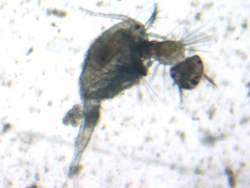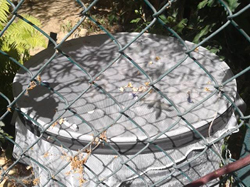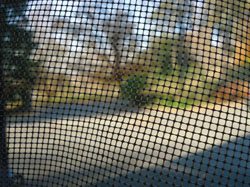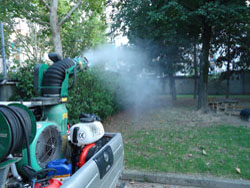THE MAIN METHODS
Here are the main methods that can be "put in place" to control mosquitoes:
INDIVIDUAL PROTECTION
Let us start with the basic and most obvious aspect that we must have all experienced, protecting ourselves from mosquito bites. We are also fully aware of how limiting some protection can be, for instance, mosquito nets only protect us in certain environments and situations (bed nets are an excellent way to protect us from malaria in tropical countries, but are useless against daytime mosquitoes, or those that annoy us out in the open air); repellents have a limited duration; trousers and long sleeves do not completely prevent a bite, especially by certain species of mosquitoes. However, they are sometimes the last, or only resource available, and therefore should always be used correctly.
ADULTICIDING
Targeting mosquitoes when they are already adults has several limits, as well as ecological ones. This is due to the current non-existence of selective active ingredients, and to a cost/benefit ratio issue. If you want to protect an area which is not too large, and for a limited time, good results can be obtained with a low cost. However, if you do not eliminate the source that produces mosquitoes (breeding sites), the treatment is no longer cost effective because it must be repeated very often. In addition, it is impossible to protect large territories by resorting to this approach alone.
Even using natural predators for adult mosquitoes is extremely problematic, mainly because there is not one that primarily eats mosquitoes. Some insectivorous animals can help limit the presence of mosquitoes, but their protection alone cannot give tangible results in terms of reducing the problem.

LARVICIDING
The mosquito larval control has proved to be much more advantageous than previous methods; this is mainly because it affects the larvae that are still harmless and less problematic. In addition, larviciding can also rely on very selective products, such as some bacterial toxins that consequently have benefits for the environment. Mosquito larvae are then limited in time and space, thus limiting the costs of disinfestation. Finally, in this context, the use of predators can yield good results; not so much because they mainly prey on mosquitoes, but because in confined environments, such as many breeding sites, mosquitoes may be their best and sometimes only prey. Unfortunately, though, not all efficient predators can live in the environments where mosquito larvae develop

SOURCE REDUCTION
When we say "source reduction", we mean any action taken to prevent the formation of larval breeding sites. Even though it is more challenging than using larvicides, it can guarantee the best and most lasting results, but it can be expensive (e.g., reclamation work), and not always practicable. Its greatest effectiveness is carried out precisely in the home environment or in any case within the competence of the private citizens:
Last modified: Feb 2021





